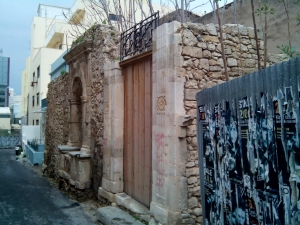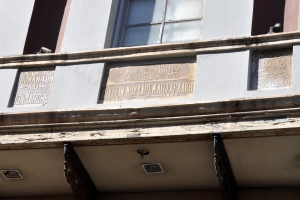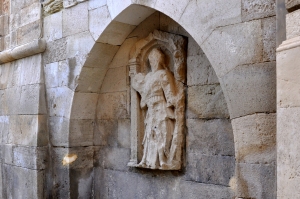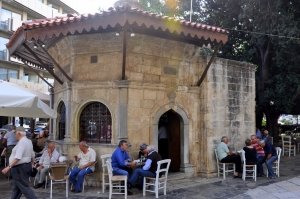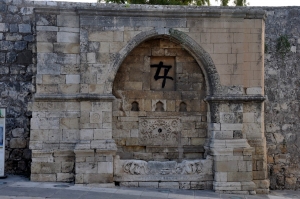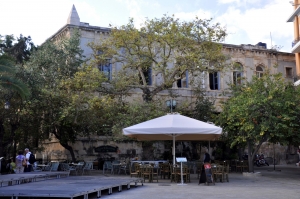The Fountain of Ibrahim Babas is located, in a terrible situation, in current Almyrou street, just north of the Park Theotokopoulos. Unfortunately, strangers have stolen parts of elaborate relief plates that adorned the fountain. The fountain is fitted on the exterior wall of the house of Ibrahim Baba that has now collapsed.
The building operated as a nunnery (Monasterio Greco Madonna Acrotiriani) during the Venetian Era (17th century) and was a dependency of the monastery of Panagia Akrotiriani Toplou by Sitia. A document of 1671 states that the main temple was dedicated to St. John the Theologian, while there was another church dedicated to St. Peter.
The building at 8 Agiou Mina Str was a drapery shop owned by Hussein Muharem Litsardakis. Built of stone and wood with a tiled timbered roof, it was erected in the closing years of Ottoman rule and inaugurated in 1892.
The fountain that we meet today in the north wall of the Venetian Loggia was built by the Duke Jiovani Sagredo during 1602-1604 to serve the nobles who were gathered in the Loggia.
The sebil of Kornarou Square, which now houses a municipal coffee shop, was built in 1776 by Hadji Ibrahim Aga who spent his entire fortune on its maintenance. It is a polygonal building with arched windows. Under each window there was a tap and a stone trough.
The fountain of Yenitsar Aga is located at the beginning of the Avenue Ikarou, below the epigraphy collection and opposite the Archaeological Museum. It was originally embeded outside a beautiful mansion on the corner of the streets Markou Avgeri and Paleologou, which was demolished in 1980.
The Venetian armoury (Armeria or Armarento) is situated between the Loggia and St. Titus Square. Although it served a different purpose than the noble's club, the two buildings formed a single complex.
The fountain is located at Michelidakis street, behind the Historical Museum of Crete. The fountain was not originally here, but adorned the exterior of the house of the doctor Idomeneas Markatatis. We can see two columns with capitals that bear performances with plants and an Ottoman inscription.











